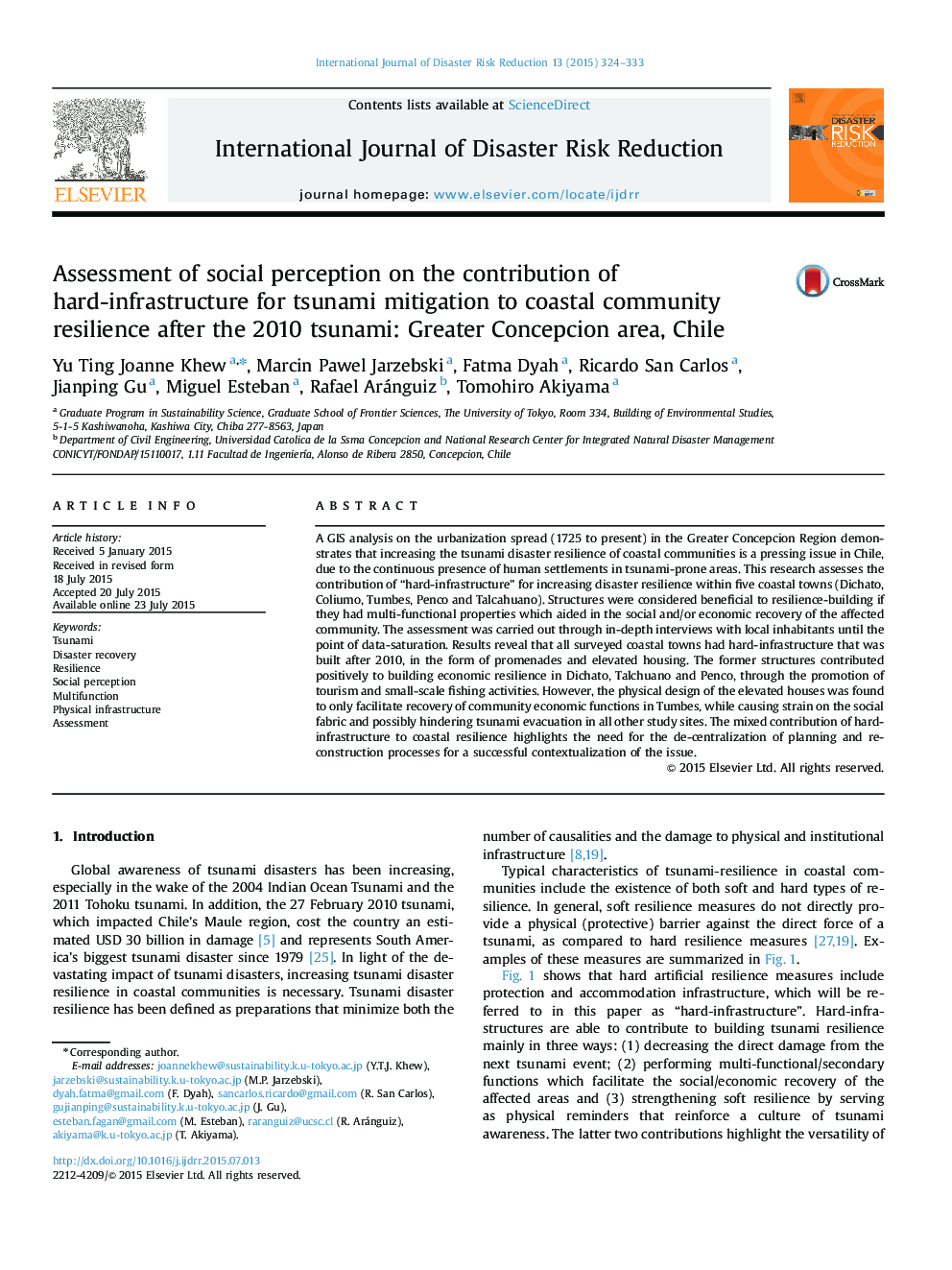| Article ID | Journal | Published Year | Pages | File Type |
|---|---|---|---|---|
| 7473234 | International Journal of Disaster Risk Reduction | 2015 | 10 Pages |
Abstract
A GIS analysis on the urbanization spread (1725 to present) in the Greater Concepcion Region demonstrates that increasing the tsunami disaster resilience of coastal communities is a pressing issue in Chile, due to the continuous presence of human settlements in tsunami-prone areas. This research assesses the contribution of “hard-infrastructure” for increasing disaster resilience within five coastal towns (Dichato, Coliumo, Tumbes, Penco and Talcahuano). Structures were considered beneficial to resilience-building if they had multi-functional properties which aided in the social and/or economic recovery of the affected community. The assessment was carried out through in-depth interviews with local inhabitants until the point of data-saturation. Results reveal that all surveyed coastal towns had hard-infrastructure that was built after 2010, in the form of promenades and elevated housing. The former structures contributed positively to building economic resilience in Dichato, Talchuano and Penco, through the promotion of tourism and small-scale fishing activities. However, the physical design of the elevated houses was found to only facilitate recovery of community economic functions in Tumbes, while causing strain on the social fabric and possibly hindering tsunami evacuation in all other study sites. The mixed contribution of hard-infrastructure to coastal resilience highlights the need for the de-centralization of planning and reconstruction processes for a successful contextualization of the issue.
Related Topics
Physical Sciences and Engineering
Earth and Planetary Sciences
Geophysics
Authors
Yu Ting Joanne Khew, Marcin Pawel Jarzebski, Fatma Dyah, Ricardo San Carlos, Jianping Gu, Miguel Esteban, Rafael Aránguiz, Tomohiro Akiyama,
